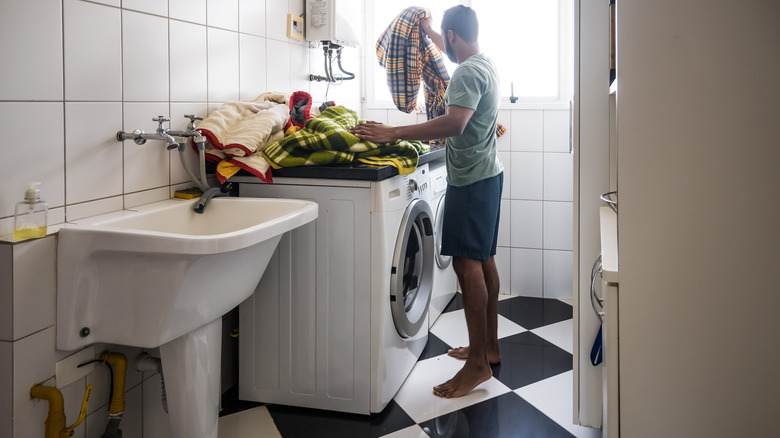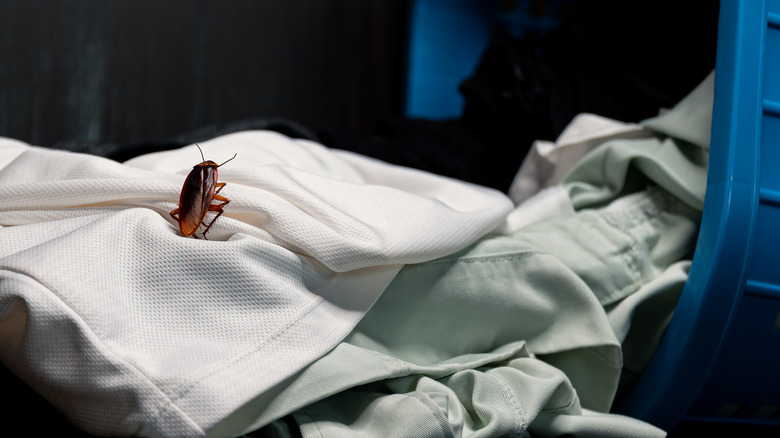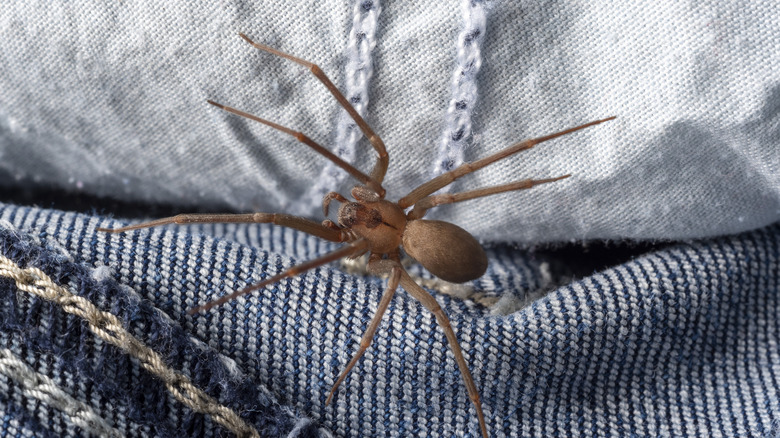Pests That May Be Lurking In Your Laundry Room (& Tips To Prevent Them)
For a room dedicated to cleaning, the laundry room may be a haven for some pests who seek out dank and dark spaces. Not only do soiled clothes attract bugs to the laundry room as a source of food, but the damp clothes and warm environment (thanks to the dryer) also provide them a source of water and heat. The humble bed bug is one of the most common insects to seek refuge in the laundry room. Other pests you may find are cockroaches and brown recluse spiders.
Studies show that bed bugs can multiply at an alarming rate in the washroom space once established. One way to know if these pests have migrated from the bedroom to the laundry room is to inspect your clothes and the nooks and crannies of your appliances. If you can't spot the apple seed-sized insects, you may find tiny eggshells or even small, dark stains that they leave behind.
An excellent infestation-preventative strategy is to have regular inspections and remove as much clutter as possible. In a Scientific Reports study, Dr. William Hentley from the University of Sheffield advises (via Science Daily), "Our study suggests that keeping dirty laundry in a sealed bag, particularly when staying in a hotel, could reduce the chances of people taking bed bugs home with them." By containing the vermin, you reduce the chance of it spreading. And since bed bugs cannot survive high heat, it's also a good idea to steam the contaminated clothing or run it through the dryer at its highest temperature.
Cockroaches find a haven in the laundry room
Cockroaches are not just targeting your pantry and the leftovers beneath your teen's bed. These die-hard scavengers thrive in the damp environment of your laundry room where they sample on laundry detergent and even the very fabric of your clothing. With ample access to heat and water, no wonder roaches live it up in the laundry room.
How to tell if roaches have invaded your house? The tell-tale signs of these pests include musty odors, droppings that resemble coffee grounds, and cockroach egg cases. And, thanks to the bulky washer and dryer, these vermin can stay relatively undetected until their numbers start to grow. In a single year, just one female (and her progeny) can reproduce up to 800 cockroaches, per the Pennsylvania State University.
The best course of action is to take preventative measures against the pesky bugs. First, eliminate any source of water for the cockroaches by drying all clothing on the same day if possible, or consider outside line drying. Place other sources of food such as soap and laundry detergent in tightly sealed storage containers. Next, check that all the pipes and fittings are not leaking, and increase ventilation in the space to avoid condensation. Make it hard for cockroaches to gain entrance by sealing all cracks, windows, and doors, and removing rubble outside the home. And if you're really serious about keeping the roaches out, surround the house with a 6- to 12-inch-wide layer of gravel.
Brown recluse spiders love quiet laundry rooms
While cockroaches and bed bug bites are relatively harmless to humans, a brown recluse spider's venom, per an Oxford Academic study, is more dangerous than that of a rattlesnake if enough poison is released. And, if that doesn't freak you out enough, you may be surprised to learn that the violin spider loves hanging out in the laundry room. This makes sense as the space is one of the rooms with the least foot traffic, so the shy arachnid doesn't have to contend with loud humans. In addition, a steady source of food and water (thanks to the food-stained clothes and other insects) means the recluse may never want to leave the room again.
Signs of a brown recluse spider infestation include irregularly shaped, loose webbing that may resemble sheeting. You may find these spiderwebs or even two- to three-inch whitish eggs behind appliances or other objects since they don't typically build webs in the open. A common indicator of brown recluses could be another insect infestation in the space. See, violin spiders are the natural predators of cockroaches, who in turn, eat bed bugs, so no wonder the laundry room is an oasis for the brown recluse.
As with cockroaches, seal any cracks or crevices in the walls, repair window and door screens, and even invest in door sweeps to keep spiders out. Eliminate hiding places for the eight-legged pest by regularly decluttering and avoiding making piles of laundry on the floor.


